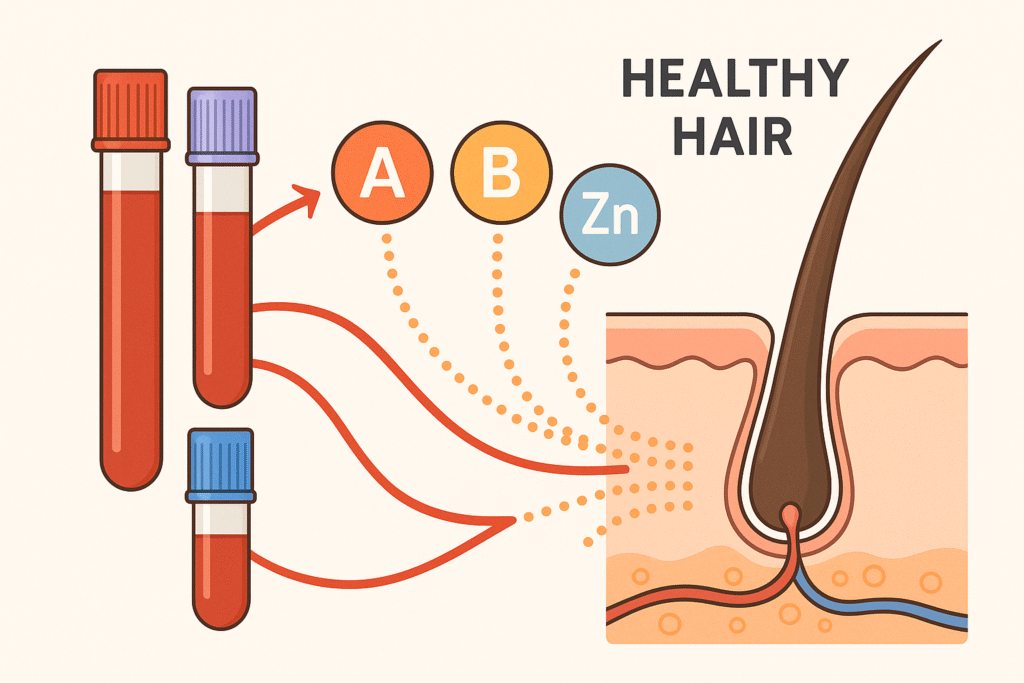Introduction
Primarily, saw palmetto is recognised for its potential benefits in men’s health. It’s often used to support prostate health and combat hair loss. Some men also use it to improve urinary function and boost libido.
However, the effectiveness of saw palmetto can vary from person to person. It’s important to understand that while it offers potential benefits, it’s not a substitute for medical treatment. Always consult with a healthcare provider before starting any new supplement, including saw palmetto.
In this article, we’ll delve into the benefits of saw palmetto for men. We’ll explore its uses, the science behind it, and how to incorporate it into your wellness routine. Whether you’re new to natural supplements or a seasoned user, this guide will provide valuable insights.
Table of contents
- Introduction
- Understanding Saw Palmetto
- Prostate Health and Saw Palmetto
- Saw Palmetto and Hair Loss
- Saw Palmetto for Urinary Function and Libido
- Forms of Saw Palmetto: Capsules, Tea, and Extracts
- Safety, Side Effects, and Interactions
- Choosing a Quality Saw Palmetto Supplement
- Conclusion and Next Steps
- Scientific Studies & Review Articles
- Hair Loss GP Related Links
Understanding Saw Palmetto
Saw palmetto, scientifically known as Serenoa repens, is a type of palm. It’s native to the southeastern United States. The plant is characterised by its fan-shaped leaves and berries.
These berries are the powerhouse of saw palmetto. They’re packed with beneficial compounds. For centuries, they’ve been used in traditional medicine for various health issues.
Today, saw palmetto supplements come in various forms. These include capsules, tablets, and liquid extracts. There’s also saw palmetto tea, a less common but natural way to consume the herb.

Historical Use in Traditional Medicine
The use of saw palmetto in traditional medicine dates back to the Native Americans. They used it to treat urinary and reproductive issues. This historical use provides a context for its modern-day popularity.
Over time, saw palmetto has been incorporated into Western herbal medicine. It’s often combined with other herbs and nutrients in men’s health supplements. This reflects its recognised potential in supporting men’s health.
The Science Behind Saw Palmetto
The potential benefits of saw palmetto are linked to its ability to inhibit the conversion of testosterone to dihydrotestosterone (DHT). DHT is a hormone that can contribute to prostate enlargement and hair loss. By reducing DHT levels, saw palmetto may help manage these conditions.
Recommended Read
Some research also suggests that saw palmetto has anti-inflammatory properties. This could contribute to its potential benefits. However, the impact of saw palmetto on testosterone levels and long-term health outcomes is still under investigation.
It’s important to note that clinical trials on saw palmetto have yielded mixed results. This emphasises the need for individual assessment and consultation with a healthcare provider.
Prostate Health and Saw Palmetto
One of the primary uses of saw palmetto is to support prostate health. The prostate is a small gland that plays a key role in male reproductive health. However, it’s prone to certain conditions as men age.
Saw palmetto is commonly used to manage symptoms of benign prostatic hyperplasia (BPH). BPH is a condition characterised by the enlargement of the prostate gland. It can cause urinary problems and discomfort.
By inhibiting the conversion of testosterone to DHT, saw palmetto may help prevent or reduce prostate enlargement. This could potentially improve urinary function and reduce the need for nighttime urination.
Managing Benign Prostatic Hyperplasia (BPH)
BPH is a common condition in older men. It can cause frequent urination, difficulty starting and stopping urination, and a weak urine stream. These symptoms can significantly impact a man’s quality of life.
Studies suggest that saw palmetto may help reduce these symptoms. It’s believed to work by reducing the size of the inner lining of the prostate. This can relieve pressure on the tubes that carry urine.
However, the effectiveness of saw palmetto in managing BPH can vary from person to person. It’s important to consult with a healthcare provider for personalised advice.
Saw Palmetto and Prostate Cancer Research
Prostate cancer is a serious health concern for men. Research into potential preventative measures and treatments is ongoing. Some studies have explored the role of saw palmetto in this context.
Preliminary research suggests that saw palmetto may slow the growth of prostate cancer cells. This is thought to be due to its effects on DHT, a hormone that can stimulate prostate cell growth.
However, these findings are preliminary and more research is needed. Saw palmetto should not be used as a substitute for medical treatment for prostate cancer or any other serious health condition.
Saw Palmetto and Hair Loss
Hair loss is a common concern for many men, particularly as they age. Male pattern baldness, also known as androgenetic alopecia, is often linked to DHT. This is the same hormone that saw palmetto is believed to inhibit.
Some men use saw palmetto to combat hair loss. The theory is that by reducing DHT levels, saw palmetto could potentially slow or prevent hair thinning and loss. It’s sometimes used in hair care products for its purported benefits for hair health.
However, research on saw palmetto’s effectiveness for hair loss is mixed. Some studies suggest it may help, while others show little to no effect. As always, individual results may vary.
Saw Palmetto for Urinary Function and Libido
Saw palmetto is often used to improve urinary function. This is particularly beneficial for men with BPH, a condition that can cause frequent urination. By potentially reducing prostate size, saw palmetto may lessen the need for nighttime urination, improving sleep quality.
In addition to urinary health, saw palmetto is explored for its potential to boost libido and sexual function. Some men report an increase in sexual desire after taking saw palmetto, although scientific evidence is limited.
As with all supplements, individual experiences with saw palmetto can vary. It’s important to consult with a healthcare provider to discuss potential benefits and risks.
Forms of Saw Palmetto: Capsules, Tea, and Extracts
Saw palmetto is available in various forms, each with its own advantages. Capsules and tablets are the most common, offering a convenient way to incorporate this supplement into your daily routine.
Liquid extracts are another option. They are often mixed with water or added to food. Some people prefer this form due to its fast absorption.
For those who enjoy herbal teas, saw palmetto tea is an alternative. It provides a natural way to consume the herb, although it’s less common than other forms. Here are the main forms of saw palmetto:
- Capsules
- Tablets
- Liquid extracts
- Tea
The Rise of Saw Palmetto Tea and Silver Saw Palmetto
In recent years, saw palmetto tea has gained popularity. It’s a soothing way to enjoy the potential benefits of this herb. However, it’s important to note that the potency may vary compared to other forms.
Silver saw palmetto, also known as Serenoa repens, is the species most commonly associated with health benefits. It’s the primary source of saw palmetto used in supplements and teas.
Safety, Side Effects, and Interactions
While saw palmetto is generally considered safe, it’s not without potential side effects. Some users may experience mild stomach discomfort or headaches. It’s also important to note that individual reactions can vary.
Saw palmetto may interact with certain medications. This includes blood thinners and hormone-related therapies. If you’re on medication, it’s crucial to consult with a healthcare provider before starting any new supplement.
Remember, saw palmetto should not be used as a substitute for medical treatment. Always discuss its use with a healthcare provider, especially if you have hormone-sensitive conditions.
Choosing a Quality Saw Palmetto Supplement
When choosing a saw palmetto supplement, quality matters. Look for products from reputable manufacturers. Transparency in labeling and standardisation of supplements is crucial for consumer safety.
Consider organic products to avoid pesticides and other chemicals. Also, reviews and testimonials can provide personal insights into the effectiveness of different brands.
Conclusion and Next Steps
In conclusion, saw palmetto offers potential benefits for men’s health, particularly in areas of prostate health, hair loss, and urinary function. However, its effectiveness can vary from person to person.
Before starting any new supplement, it’s important to consult with a healthcare provider. Further personal research is also encouraged to understand the potential benefits and limitations of saw palmetto.
External Sources
Scientific Studies & Review Articles
National Library of Medicine (PubMed): PubMed is a database of medical literature. You can find many studies on saw palmetto and hair loss by searching for relevant terms: https://pubmed.ncbi.nlm.nih.gov/
Mount Sinai Health System: Mount Sinai provides information on saw palmetto’s uses and side effects, including its potential for hair loss treatment: https://www.mountsinai.org/health-library/herb/saw-palmetto










